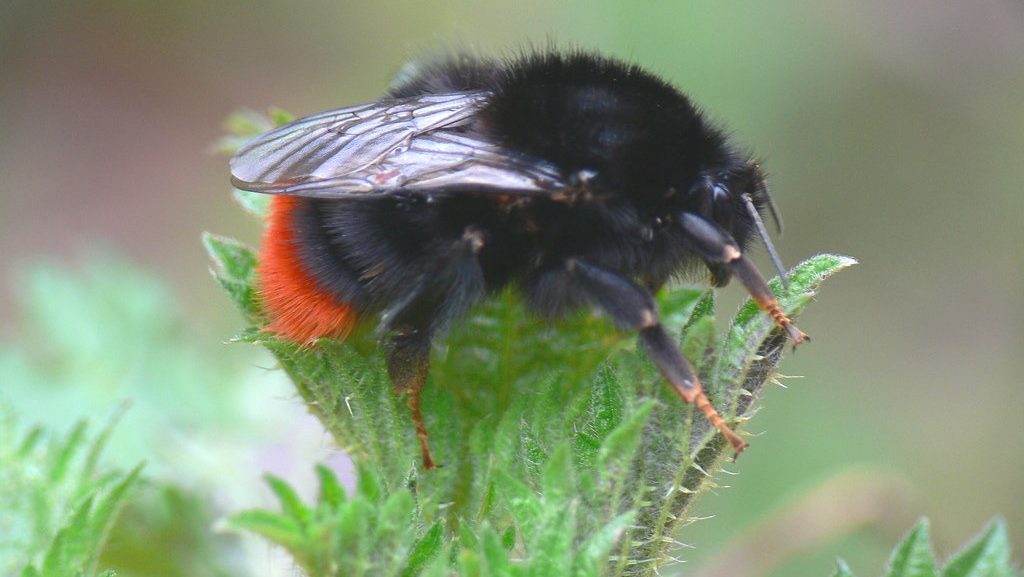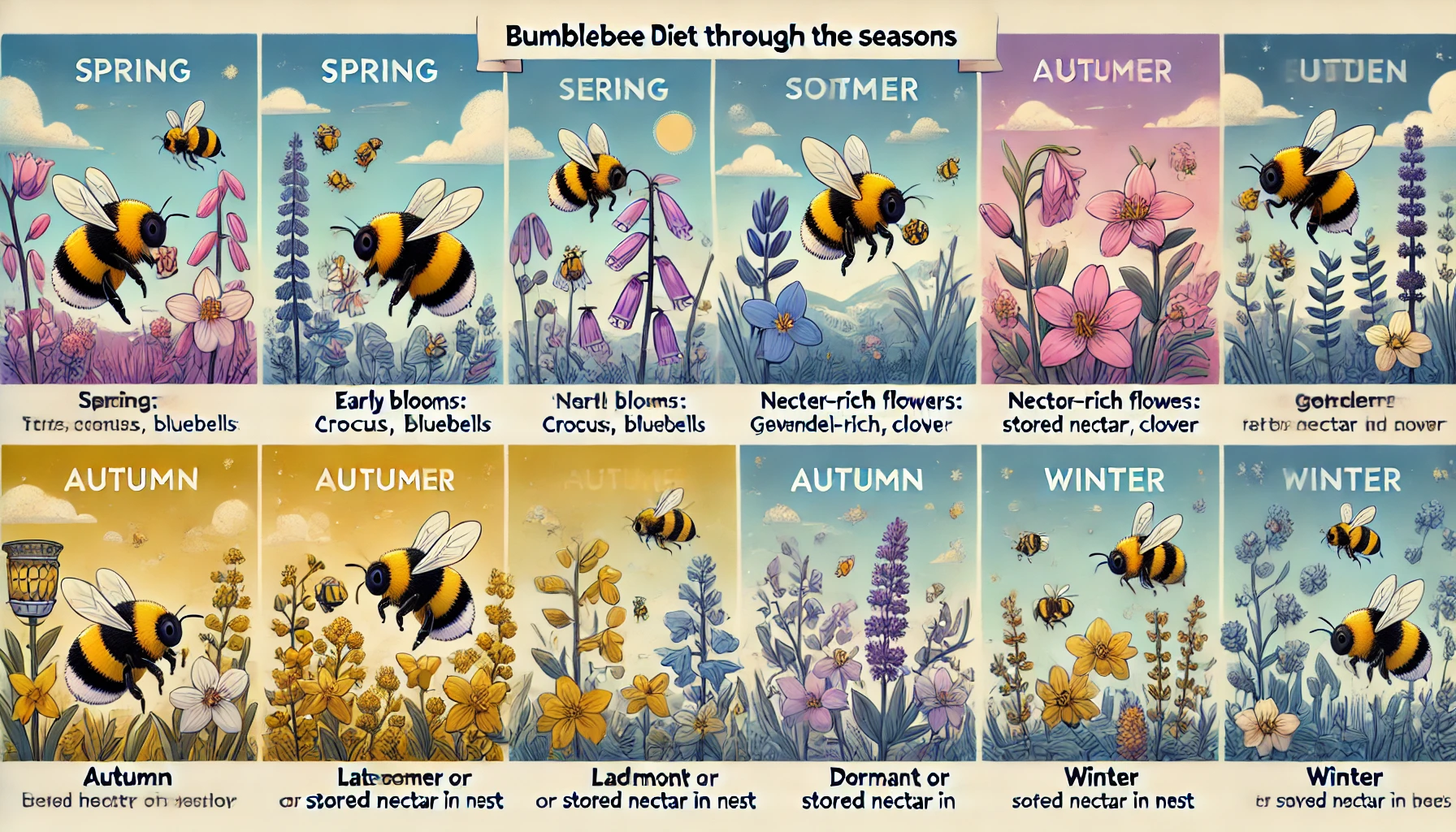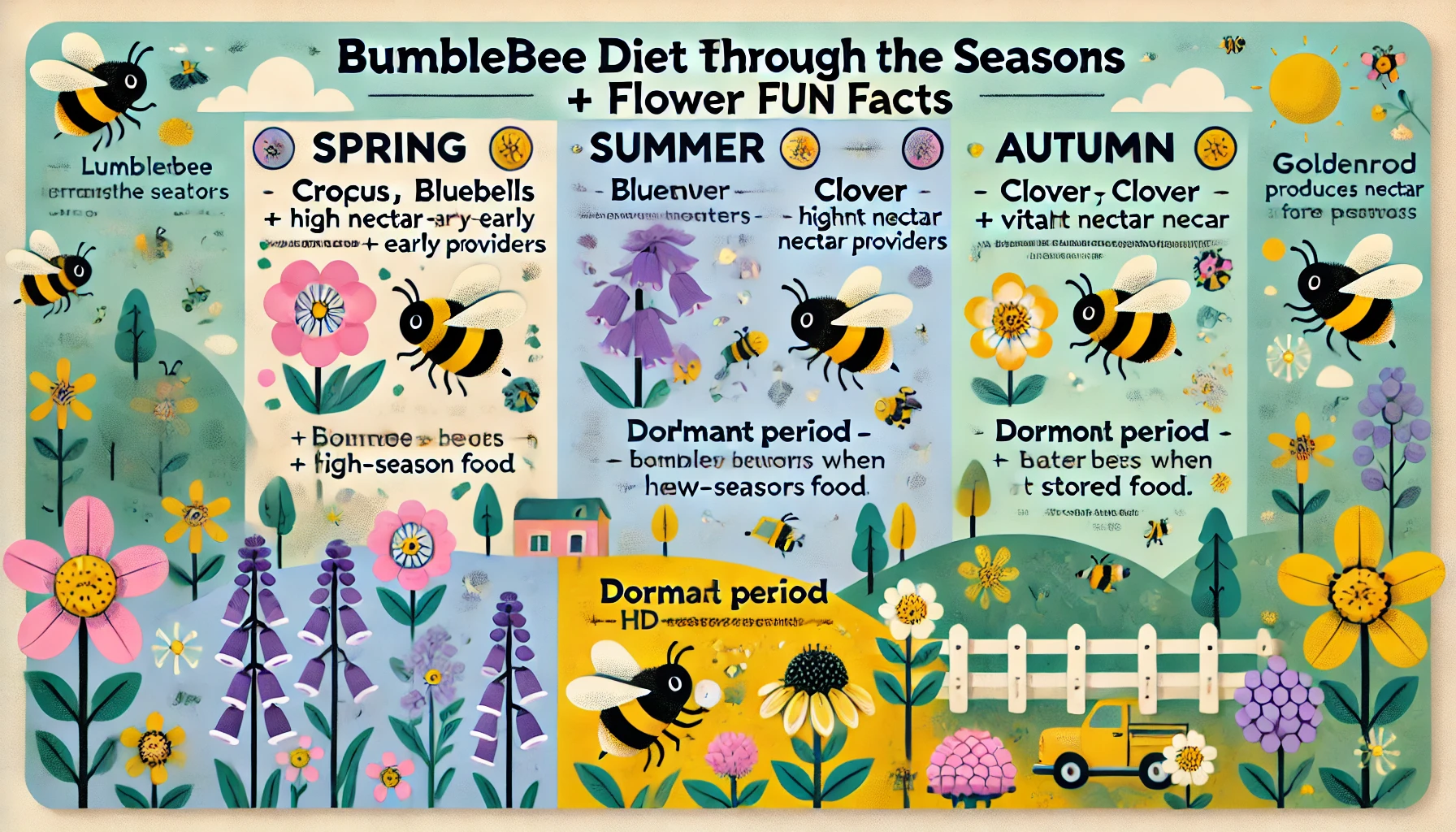Key Takeaways
- Bumblebees primarily consume nectar (for energy) and pollen (for protein and growth).
- They do not produce significant amounts of honey.
- Providing water and nectar-rich flowers can support local bumblebee populations.
- Seasonal flower planting helps ensure bees have food year-round.
- Offer sugar-water only as a temporary emergency aid.
 Bumble is a common and favorite vision around gardens and parks across the United States. These fuzzy, colored insects are important pollpers, who play an essential role in healthy ecosystems and vibrant gardens. But have you ever surprised: Do you really eat bumbled? Understanding their diet can help you better support these favorable visitors and can help to ensure your garden.
Bumble is a common and favorite vision around gardens and parks across the United States. These fuzzy, colored insects are important pollpers, who play an essential role in healthy ecosystems and vibrant gardens. But have you ever surprised: Do you really eat bumbled? Understanding their diet can help you better support these favorable visitors and can help to ensure your garden.
Nectar: Bumblebees’ Sweet Energy Drink
Nectar is the primary food source for adult bumblebees. This sugary liquid, produced by flowering plants, offers the vital energy bees need for their daily tasks. Flying, pollinating, and maintaining their colonies are energetically demanding activities, and nectar provides the fuel necessary to keep them buzzing actively throughout the day. Bumblebees have specialized straw-like tongues known as proboscises, which they use expertly to extract nectar from deep within flowers. They prefer plants with abundant nectar, such as lavender, bee balm, clover, and sunflowers. The availability of nectar is especially important during the spring and summer months when worker bees tirelessly gather food to nourish the entire colony, including the queen and developing larvae.Pollen: The Protein-Rich Superfood for Bumblebee Larvae
In addition to nectar, pollen is another essential diet component for bumblers, especially for their larvae. Bulle larvae require adequate amounts of protein to develop, develop and eventually mature to adult bees. Pollen provides significant nutrition, which is an important part of the bumbled diet. You must have seen bumps flying around your garden, flying around your garden, with lively, colorful balls attached to your Hind feet. These balls are pollen baskets, carefully filled with pollen collected from various flowers. Once returning to the nest, the activists combine the bee pollen with small amounts of nectar, which forms a nutritious substance known as “bee bread”. B bread acts as a primary food source to develop larvae, ensuring that they become strong and healthy.

Not getting a solution?
Get your free pest control estimate today!Do Bumblebees Produce or Eat Honey?
One common misconception is that all bees produce honey. However, unlike honeybees, bumblebees do not produce honey in large quantities. Instead, they briefly store small amounts of nectar in tiny wax pots within their nests. These nectar reserves are intended mainly for immediate consumption or short-term use during inclement weather when bees are unable to forage. Occasionally, bumblebees may consume honey if they encounter it, but this is not a significant part of their diet. Their lifestyle and colony structure revolve around fresh nectar rather than long-term honey storage, aligning with their annual, seasonal colony cycle.The Importance of Water for Bumblebees
In addition to nectar and pollen, bumblebees require water to survive, especially during hot summer months. Nectar alone does not always provide sufficient hydration, prompting bees to actively seek out fresh water sources. Bumblebees use water not only to hydrate themselves but also to help regulate the temperature and humidity levels within their nests. Observant gardeners might see bumblebees drinking water droplets from leaves, shallow puddles, or damp areas in their yards. Providing shallow dishes with clean water and small stones for safe landing spots can offer much-needed support during periods of drought or high temperatures, helping sustain local bumblebee populations.
Bumblebee Diet Through the Seasons
Understanding how the dietary needs of bumblebees shift throughout the year provides valuable insights into their lifecycle: Spring In spring, queen bumblebees emerge from winter hibernation hungry and eager to establish new colonies. They immediately seek out nectar- and pollen-rich flowers to replenish energy reserves depleted during winter. Early-blooming flowers such as crocuses, fruit tree blossoms, and dandelions are especially critical during this period, providing vital nourishment for queens as they prepare to lay their eggs. Summer During summer, worker bees emerge and take over foraging duties. These workers tirelessly collect nectar and pollen to support the growing colony. Gardens abundant with summer blooms, including lavender, bee balm, sunflowers, and assorted wildflowers, attract countless bumblebees eager for nourishment. Continuous nectar and pollen availability is essential for colony expansion and sustainability throughout this busy season. Fall As autumn approaches and temperatures cool, bumblebee colonies focus on raising new queens and male bees. These new queens consume large quantities of nectar to build fat reserves necessary for winter hibernation. Late-season flowers, such as asters, goldenrods, and sedums, become increasingly important food sources, providing essential nourishment as nectar availability begins to decline. Winter Winter marks a period of dormancy for bumblebees. Most colony members, including workers and males, die off as temperatures drop and flowers become scarce. Newly mated queens survive by entering hibernation, relying entirely on stored energy reserves acquired during fall feeding. Throughout winter, these queens remain inactive, emerging only when temperatures rise in the spring.
Flowers Bumblebees Love: How to Support Their Diet
- Planting the right flowers can significantly help sustain bumblebee populations in your garden:
-
Lavender: Produces abundant nectar and is one of the most attractive flowers for bumblebees.
-
Clover: A simple, easy-to-grow plant that offers both nectar and pollen for feeding bees.
-
Bee Balm: Features bright, nectar-rich blooms that are especially inviting to pollinators.
-
Sunflowers: Provide large amounts of pollen and nectar while adding vibrant color to your garden.
-
Goldenrod and Asters: Important late-season bloomers that offer vital nourishment when other flowers are gone.
Emergency Sugar-Water Feeding: When and How to Help
Sometimes, especially during colder weather or early spring, you might encounter a weak or lethargic bumblebee. In these situations, offering a simple sugar-water solution (equal parts white granulated sugar and water) can give a bee the quick energy boost it needs to recover. However, use this method cautiously and sparingly. Place a small drop of sugar-water near the bee, allowing it to drink naturally. Usually, a bee will regain strength quickly and fly off to find nectar-rich flowers. Remember, natural nectar from flowers is always the best long-term dietary solution for bumblebees. By understanding and supporting bumblebees’ dietary needs, gardeners across the United States can contribute significantly to the health and sustainability of these vital pollinators and, by extension, to the vibrancy of their gardens and local ecosystems.
If you feel things have gone out of control, it is advised to contact pest control professionals. Our team can provide a customized approach to protect your home effectively.
By understanding and supporting bumblebees’ dietary needs, gardeners across the United States can contribute significantly to the health and sustainability of these vital pollinators and, by extension, to the vibrancy of their gardens and local ecosystems.
If you feel things have gone out of control, it is advised to contact pest control professionals. Our team can provide a customized approach to protect your home effectively.
Visit our Species, Control, and DIY Guide sections for additional resources on bumble bees and ways to tackle a bumble bees infestation.





